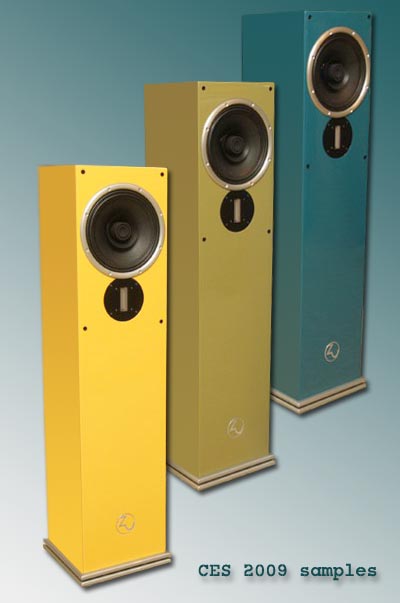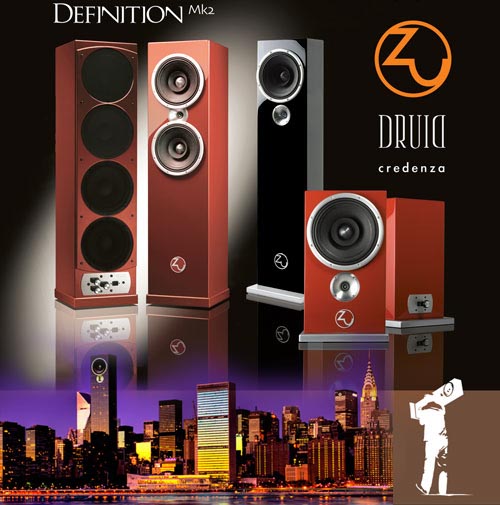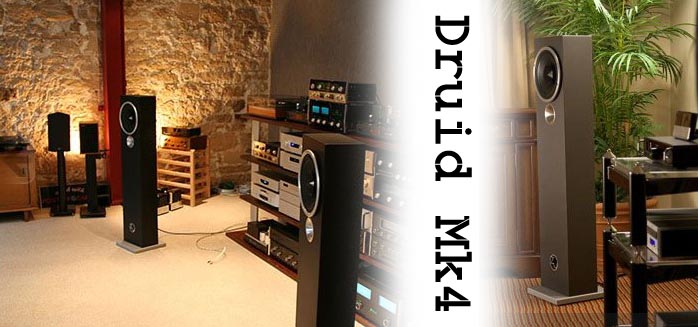|
This review page is supported in part by the sponsors whose ad banners are displayed below
|
|||||||||||||||
 |
|||||||||||||||
 |
|||||||||||||||
"Our new cone continues to use natural wood-based cellulose with a tree-oil based epoxy binder for both secondary and primary cones. This new binder increases stiffness from voice coil to whizzer and secondary cone. Naturally derived, this type of lacquer is highly copasetic with cellulose. Benefits include rendering the cones impervious to moisture; increased stiffness without damage to damping; and only a slight increase in moving mass. Observed audio benefits include consistency of tone and performance from desert to tropical climates; improved wave propagation velocity within the cone; and improved high-frequency coupling of voice-coil assembly to whizzer cone. The whizzer is now as closely coupled to the voice coil former as possible without making the two from a single part. The whizzer is attached on both the outside and inside of the former using two types of glues, the inner glue being a poly for damping and the outer a slow-cure natural epoxy for rigidity and improved high frequency support. There has been too much talk about cone breakup modes in hifi. Suffice it to say that the dynamic behavior of paper is radically different than those of metals, plastics, ceramics and composites." |
|||||||||||||||
|
|||||||||||||||
|
| |||||||||||||||
"High efficiency is very important to all Zu loudspeakers. Not only does it afford the user exploration into a far broader world of amplification technologies but it is our opinion that this is the only way to enjoy accurate and convincing dynamic realism. The more a cone moves, the more harmonic distortion it generates. If you like it clean, dynamic, real and compelling, high efficiency is a must. "Efficiency (not simply voltage sensitivity) has two aspects. The first is acoustic power transfer generally related to the diaphragm and its supporting elements. The second is electrical-magnetic power transfer, i.e. motor, transformer and so on. Both elements must be balanced with the loudspeaker as a whole and factored with the bandwidth, polar response characteristics and dynamic range behavior. "Now comes the high-frequency true ribbon tweeter. Traditionally, ribbon tweeters have lacked some degree of dynamic realism particularly in the attack. They have also struggled to get good power transfer from amp to ribbon element as a function of a very large magnetic gap and drive transformer, requiring a conductive metal alloy diaphragm. By ribbon standards, ours is extremely efficient particularly were we need it to perform above 10kHz. Its transformer and motor are very well engineered and fabricated and the assembly's balance between attack, sustain and decay is exceptional. |
|||||||||||||||
 |
|||||||||||||||
 |
|||||||||||||||
 |
|||||||||||||||
| "Our pure copper B3 internal cabling is cold-forged directly to the Cardas copper binding post lugs and runs uninterrupted all the way to the Zu260FRD/G4's voice coil lead-ins. There are no solder joints, crossover points or Y-outs to get in the way of tone and texture. Every effort is made to eliminate junctions, solder points and impedance irregularities to maximize the positive benefits possible from specifically engineered and precision cabling. "True for the main harness and high-pass network feeding the ribbon, Zu's B3 geometry allows for a very high density of magnetic and electric fields in a very small area. This makes B3 cable inherently resistant to electromagnetic fields and other RF noise. B3 also affords very 'square' bridge measurements of inductances, capacitances and resistance, allowing linear unphased transmission of signal and power. |
|||||||||||||||
|
Old line formally discontinued as of January 1, 2009
|
|||||||||||||||
| "Solder of all types is a less than optimal joining method for wire. It is less conductive than basic bare wire wrap and at least four times more resistive than a good cold-forged connection when applied to moderate loudspeaker level signal. Cold forging ensures a lifetime of trouble-free unchanging performance whereas solder does not. The Cardas copper binding posts support bare wire, pins, standard 1/4" (6.3mm) spades, oversized 5/16" (8mm) spades and in a pinch work with banana plugs." |
|||||||||||||||
 |
|||||||||||||||
Having sold my Definition Pros back to Zu for conversion to 1.9 status for a deal seeker and to clear the deck for the big Acoustic System Tango R as my new reference speaker, I had unused Zu credit. The Essence looked like a great way to reinvest it. The concept of an easy load, passive speaker with small footprint, easy size and weight to serve a reviewer's never-ending system swaps plus high sensitivity for low-power tube amps was very appealing. When not in use, the Essence would easily fit into my speaker closet. Plus, I didn't yet have a single ribbon speaker in my arsenal. Having discovered Zu through ownership of the Druid Mk4 a few years ago, this acquisition would bring me full circle. Back to the beginning yet presumably more of a spiral than circle - if the improvements emerged on a higher plateau as promised. |
|||||||||||||||
 |
|||||||||||||||
Initial CES show report mentions were promising. Positive Feedback Online selected Zu's exhibit as an Audio Oasis: "The new Essence from Zu provides a lot of bass and was highly enjoyable to listen to. This system rocked with no hint of concern. Way cool. Zu has dropped all their previous lines of speakers and only offer the Essence. A real steal at $5k. Clean and wonderful." Stereophile's John Atkinson: "As my readers will know, I am not generally a fan of designs where sensitivity/efficiency is given preference as a design goal over low coloration. But driven by a Melody 2A3-based push-pull amplifier offering all of 10W, the Essence sounded surprisingly clean and relatively neutral, as well as superbly dynamic." For a brief informal CES comment by Sean Casey, read this SideBar. |
|||||||||||||||
|
| |||||||||||||||
Adam Decaria: "The cabinet is intentionally void of internal bracing as we are looking for a very low/broad Q cabinet and the Baltic Birch plywood baffle covers the full rang driver and the ribbon tweeter completely. There is dual-density batting behind the widebander. The Essence features a layer of wool sound batting and a layer of fiberglass batting on top of that. That functions extremely well." From an ingredient perspective, the Essence is minimalist exactly as her concept predicts. The real question of course was, how would those ingredients come together... |
|||||||||||||||
 |
|||||||||||||||
 |
 |
||||||||||||||
 |
|||||||||||||||